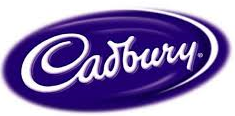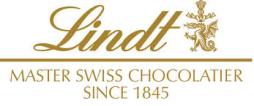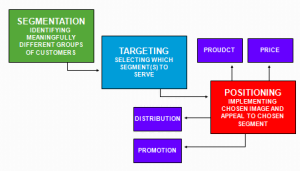by Anna Townsend and Sabrina Tjang
Let’s talk about chocolate. It soothes our cravings and gives a little kick in the day. It comforts us when we are down, just like a best friend.
The truth is Australians love confectionery. Each Australian consumes on average 6.7kg annually, making confectionery the most popular snack food. Chocolate makes up for 77% of all confectionery sales in Australia in a market worth $2 billion. link
Impulse purchases account for 47% of confectionery bought, and nearly 50% of all chocolate buyers fall within the 25 – 49 year age group. Women tend to buy more chocolate than men, but in most cases they are buying for their families. It has been found that men aged 35 – 49 are the top buyers of chocolate bars and blocks, usually for personal consumption. The Australian confectionery market continues to grow, with annual volume increasing 12.5% over the past five years. link
With chocolate being widely consumed, brands would want to narrow down the nearly universal demographic to focus on specific segments. With the highly competitive market, brands would also want to differentiate themselves from others with strategic brand positioning, increasing their competitive advantage. Clever. Stepping on competitors’ feet could lead to bloodshed.
Three well-positioned chocolate brands are Lindt, Cadbury and Home Brand (Coles/ Woolworths).
These brands cater to three tiers of the chocolate market in Australia. Let’s consider their marketing strategy by using STP (Segmentation, Targeting and Positioning).
Segmentation: the dividing and grouping of markets into specific segments of customers that share similar attitudes or behaviors in brand choice. link
 Lindt applies Psychological segmentation – premium brand and the Depth Strategy (i.e. serving one segment well).
Lindt applies Psychological segmentation – premium brand and the Depth Strategy (i.e. serving one segment well).
Home Brand chocolate uses a depth strategy and utilises psychological segmentation, providing consumers with a lower price alternative
 Cadbury applies a Tailored Strategy (i.e. customising for segments) by dividing it into various segments with its various product sizes, such as: break segment, impulse segment, take-home segment and gift segment.
Cadbury applies a Tailored Strategy (i.e. customising for segments) by dividing it into various segments with its various product sizes, such as: break segment, impulse segment, take-home segment and gift segment.
Cadbury has various product sizes:
- Bite size e.g. Freddo faces, Crispello bags, etc.
- Small sizes/ chocolate bars (50-60g), e.g. Twirl bar, Crunchie bar, etc.
- Block sizes (135g – 500g)
- Boxed chocolate package, e.g. Cadbury Christmas Sharing edition, favourites Mini Blocks, etc.
Targeting: selecting specific segments to enter. One would consider the product and its appeal to certain markets.
- People who are willing to pay a premium for better quality chocolates and luxurious Lindt branding, with 25 – 31 year old age bracket
- To household and non-household consumers:
– Lindt café. Targeted at consumers who enjoy café culture, ambience and service. Lindt has eight cafés in NSW and Victoria that offer different types of sweet and savoury foods and drinks
– ‘Food service’ products (a broad range of chocolates and sweets). Targeted as gifts, menu selections or everyday consumption from a large number of retail outlets.
 Home brand has lower prices than Lindt and Cadbury. It targets lower-income, price sensitive or ‘smart shopper’ consumers who still want to enjoy similar products at a lower price. It has simple packaging designs, clear labelling. Their simple designs also minimise production costs.
Home brand has lower prices than Lindt and Cadbury. It targets lower-income, price sensitive or ‘smart shopper’ consumers who still want to enjoy similar products at a lower price. It has simple packaging designs, clear labelling. Their simple designs also minimise production costs.
 Cadbury has many products to target specific segments that cover a broad range of consumers:
Cadbury has many products to target specific segments that cover a broad range of consumers:
- Pre-teen products that attract children age 9-12 (e.g. Caramello and Freddo)
- Other product ranges such as Old Gold blocks, Chocolate blocks, etc. attract consumers of all ages
- Nut free products (Pascall range) for nut intolerant people
- Cadbury has products that are halal certified
- Targeting health conscious consumers with a nutritional panel of daily intake (DI) %. Cadbury packaging features a visible ‘be treatwise’ logo
 Be treatwise is a message to educate and remind people that confectionery is a treat that is designed to be enjoyed as part of a balanced diet and active lifestyle.
Be treatwise is a message to educate and remind people that confectionery is a treat that is designed to be enjoyed as part of a balanced diet and active lifestyle.
Positioning: the efforts to differentiate a brand from its competitors. Effective positioning is majorly determined by successful communication and perception of the intended message.
 Lindt positions themselves as a luxurious chocolate brand, proposing the promise of high quality and fine tasting chocolate. Lindt uses gold in their logo and much of their packaging. Gold is commonly associated with luxury and wealth. Giving the brand’s packaging a ‘high-class’ appeal.
Lindt positions themselves as a luxurious chocolate brand, proposing the promise of high quality and fine tasting chocolate. Lindt uses gold in their logo and much of their packaging. Gold is commonly associated with luxury and wealth. Giving the brand’s packaging a ‘high-class’ appeal.
 Home brand chocolate positions themselves as the smart shopper’s choice, with more competitive prices compared to branded products. Home Brand provides consumers with a ‘no frills’ alternative at reasonable quality.
Home brand chocolate positions themselves as the smart shopper’s choice, with more competitive prices compared to branded products. Home Brand provides consumers with a ‘no frills’ alternative at reasonable quality.
 Cadbury positions themselves as an
Cadbury positions themselves as an
“all-time favourite chocolate that is meant for all, irrespective of the age, class and gender”
They primarily use purple for their trademark packaging with colour accents for different products, depending on the targeted demographic.
Why do we need to use STP to develop marketing strategy?
 STP is important in strategic marketing planning because by understanding your market segmentation, who your target customers are and how you position your brand/product in the market, you can determine your 4P’s: what products you are going to sell, the pricing strategy, how and where you are going to sell your products and lastly, how you are going to promote your products.
STP is important in strategic marketing planning because by understanding your market segmentation, who your target customers are and how you position your brand/product in the market, you can determine your 4P’s: what products you are going to sell, the pricing strategy, how and where you are going to sell your products and lastly, how you are going to promote your products.
What is your perspective of these three brands?
What do you think of these three brands’ market share in Australia? Who do you think has the largest slice of the pie? Are you one of their customers? If yes, why?


I look at the three brands and think that there may be another way to get to the same conclusion, via the three types of consumer purchases.
I’m going to a party. Because i am such a sweet guy i am going to take with me a Mudcake for dessert, some after dinner chocolates and some nice thank you chocolates for the host.
The chocolate for the mudcake. I don’t really care about. I couldn’t be bothered i just need it to be dark chocolate and cheap. I’ll get the home brand. That is a convenience purchase.
The chocolate for after dinner. Well there are a few different flavors that i like, i should probably consider others as well. They are all about the same price. I want to make sure everyone can get an even piece. I don’t want to look cheap. The Cadbury block is exactly what i need. A shopping purchase.
The chocolate for my hosts. What kind of chocolate do they like again, white? dark? I may need a mix box. How good a friend are we? Should i get the big box? I probably should. I’m not going to look cheap and buy one of the standard brands,these ones are suppose to fancy aren’t they? It’s in a nice box and there’s gold and ribbon on it. That’s good. It’s got some fancy Swiss, Italian or Belgian name, that cant be bad. I’ll buy the Lindt. A specialty purchase.
The conclusion I reach is the same as yours. Though I wonder which route the marketers went down to decide how they were going to market their products.
LikeLiked by 1 person
I personally dislike all the mentioned brands but I know of a lot of people who love Cadbury and Lindt, therefore it must be the most favorite in Asutralia.
Although for me no amount of advertising by Cadbury will get me to eat it because I dislike the overly sweet, creamy taste. On a few occasions I have bought Lindt because I think thier advertising is more appealing to me as it creates a sense of luxury and an illusion of higher status and it most deffinetly is more expensive compared to Cadbury. Hence I would purchase Lindt over Cadbury as a gift for someone else.
LikeLiked by 1 person
I think as an European who stayes in Australia for a while Lindt creates for you that special taste called ‘Home’ if you know what I mean. Me as a German eat Lindt chocolate often in the case I felt homesick because it tastes for me like home. And I know that a lot of my European friends do it as well. Maybe this is another reason why lots of people prefer Lindt chocolate. They connect a good and familiar feeling with it.
LikeLiked by 1 person
Reblogged this on Marketing Management Blog.
LikeLike
Hi all,
This is about my past experience of Cadbury campaign in India.
Cadbury has targeted different segments of consumers through their various ad campaigns. From targeting kids they extended their target audience to ‘the kid in every adult’ through their ‘Real Taste of Life’ campaign. Next they targeted the youths through their ‘Pappu Pass Ho Gaya’ campaign. The last few of their ad campaigns have specifically been targeted towards converting consumers of sweets to chocolates and this they have done extensively by giving consumers the idea that chocolates could substitute sweets in ways that consumers could never think of like on special occasions or for dessert after meals or for the auspicious start of something important.
For those shopping at malls and supermarkets Cadbury aimed at as many as possible using big boxes of chocolates stored near billing area to stimulate impulse buying.
They also used the concept of eye level shelves to a great extent to capture the attention of consumers.
LikeLiked by 1 person
I love chocolate and for me Cadbury’s is a favourite, I guess because I grew up with Cadbury’s and that for me is the taste ‘of home’ mentioned by ‘dlusca’ above. It was a regular family treat on a Saturday night watching TV to share a family block of Cadbury’s. For me it has a reliable taste experience. My family too love Cadbury’s, but chocolate sharing/buying in my family is much more often than it used to be when I was growing up, so my family have enjoyed a wider variety – my eldest loves the Lindt balls and so do I – such a rich and almost sensuous experience when they melt in your mouth.
I think you are right about the way in which the brands have segmented, targeted and positioned themselves. Lindt chocolate does always seem a more luxurious choice and I tend to buy that more often for a gift – it would seem “cheap” to give a block of Cadbury’s as a gift compared to a nicely packaged offering that Lindt offers. When it comes to the Coles/Woolies brands – to be honest I have never really considered them, not even for baking. I am guided by the chefs who tell you to only use the best ingredients and to me they don’t seem to be the best choice.
LikeLiked by 2 people
This post describes me, however when Lindt run there two for one promotions on their 100 gr blocks I am a sucker.
LikeLike
Very good explanation about confectionery in Oz. I agree with STP of Cadbury,Lindt and Homebrand .I don’t feel these three are in top as there many more brands like Ferrero and Nestle.And also major supermarkets like coles and Woolworths have special discounts on festive seasons, based on the demand and supply they offer us discounts . So in case of Positioning these supermarkets promotion plays a major role .
It must be understood that targeting is first done by supermarkets using purchase summary in each store.Based on statistics all confectionery brands do promotions to target the right audience. . .
LikeLiked by 1 person
I always saw Lindt as a luxurious brand of chocolate when I was young but as of recently, over Easter, I saw it as closer to Cadbury than ever before. They are always on special in supermarkets so its price isn’t as expensive as it once was and as a consequence it now sits in my mind as a standard chocolate brand. On the other hand, Cadbury I have always loved since I was a child it has been my favourite chocolate brand and this has not changed. I see it as extremely well priced for how good it is and I would pay more for Cadbury chocolate than Lindt chocolate. Maybe this is because the Easter Egg hunts I had as a child consisted mainly of Cadbury eggs and this association with Easter has put Cadbury on a pedestal. Very interesting.
LikeLiked by 1 person
Great article – i never gave much thought to how something that is so universally enjoyed could be segmented and targeting, I think you’re spot on with your breakdown.
I personally prefer Cadbury – although I have never actually purchased the home brand before and to be honest I’m not even sure why. I only buy Cadbury chocolate when it’s on special – ie 2 blocks for $5. If it is not on special, rather than buying home brand… I buy nothing and I can’t even explain it!
LikeLiked by 1 person
Your assessment of the STP of the three chocolate brands is astute.
It is interesting to see how a company such as Cadbury is able to position their various brands to suit the multitude of market segments that they are targeting. Their branding for a product such as the ‘Marvellous Creations’ range of chocolate blocks is markedly different to the branding for their ‘Old Gold’ range, no doubt a reflection of the preferences of their respective market segments.
On a slight tangent, I once heard an urban myth (although maybe it is true?) that in the domestic beer market, Carlton United Breweries used exactly the same beer to produce their VB and Crown Lager brands – they merely changed the bottle and label to position them for two separate psychological segments. I wonder if something similar occurs in the Cadbury stable of chocolate brands? Whether true or not, it is certainly a powerful reminder of the importance of a products psychological and intangible benefits vis-a-vis the targeted market segment.
LikeLiked by 1 person
As a bit of a chocoholic, I think you’ll find the ‘Old Gold’ is actually Nestle…!
LikeLike
I too am a massive Old Gold fan (especially the Old Jamaican, rum and raisin, yum!). I think the Nestle product you are thinking of is Club. https://www.cadbury.com.au/Products/Old-Gold-Blocks.aspx
http://www.nestle.com.au/brands/club
LikeLike
You’re so right, Jason! Our local milkbar displays it in an old Nestle box! (so does that mean Cadbury’s brand packaging isn’t connecting with me?)
LikeLike
Hi,Thank you for sharing.Very good effect.
As there is huge market in Chocolate industry,for high customers’ satisfaction and business inverstment effeciency,it is very necessary to do STP analysis before launching new products or promotions in the market.Lindt,Cadbury,home made are three dominant brands in Australian market and all of them are doing pretty well in STP for business development.
Segmenting-Divide the markets into specific segments of customers that share similar attitudes or behaviors in brand choice.When comparing with one-to-one marketing(not profitable) and mass marketing(low customer satisfaction),marketiing segmentation can make full use of resources to maximum the profits.Lindt,Coles and home made brands such as Coles and Wooworths do pretty well in this aspect.Three of them have clear focused segmentation for marketing promotion.For example,People who are willing to pay a premium for better quality chocolates and luxurious Lindt branding may be their best choices.
Targeting-The idea of targeting is selection,which means the companies will choose one specific sgements to enter.As mentioned above,consumers who are purchaing high quality chocolate are Lindt’s potential customers,thus Lindt probably should focus on managing and promoting this group for increasing its market share.
Positioning-It is about identity who your brand or company is in the marketplace.Positioning requires the companies to design a product with benefits that the target segment will value,price it so that it is protitable yet seen as valuable ,build distributor relationships to the market to make it available and accessible and also communicate all of these to its potential customers through various promotions.For example,Lindt positions themselves as a luxurious chocolate brand, proposing the promise of high quality and fine tasting chocolate. Lindt uses gold in their logo and much of their packaging.
LikeLiked by 1 person
Cadbury Australia have done well, establishing themselves, so much so when I came to live here in 1995, I remember being asked if we had Cadbury Chocolates in the UK, my mouth fell open. Cadbury’s may have had their originals in England, but I soon realised that “Freddo Frog” was very Australian, and part of every school’s fundraising activities. Cadbury manufacture locally and to me have a quality product, and have positioned themselves as an Australian company.
LikeLiked by 1 person
I no longer think of Lindt as a premium brand- they have definitely lost that position in the market as far as I’m concerned. This appears to be as a result of stuffing the grocery channel with as much of their products as possible. This alone cheapens the brand but when coupled with the heavy discounting that Coles and Woolworths demand of their suppliers it certainly solidifies their position as an everyday brand now as opposed to a luxury brand. When I think of luxury cocolate brands I think of haighs or perhaps koko black, but certainly not run of the mill Lindt!
LikeLiked by 1 person
Hi Anna and Sabrina,
Thanks for this great blog, which is very well structured, provides a summary of STP and applies marketing concepts to these three chocolate brands.
I agree with you about what you mentioned in the blog. Yes, Lindt is a luxurious chocolate brand, which is high quality and very nice taste in my mind. I like 85% cocoa very much in Lindt Excellence Range. Every time when I am planning to buy a chocolate gift box for my family or friends, Lindor would be the first in my mind. Lindt’s marketing strategy seems work very well on me. Why do I like Lindt? I like dark chocolate the best. There are so many kinds of dark chocolate in Lindt Excellence Range, such as mint intense, sea salt, 70% cocoa, 85% cocoa and 90% cocoa, etc. Moreover, this brand is recommended by many of my friends (positive word of mouth). Then Lindt has a long history since 1845 with high-class packaging. Furthermore, the gold (visual stimuli) of the brand looks luxury and wealth as you mentioned.
Cheers,
Ivy
LikeLiked by 1 person
This post really talked to me as I am suffering a “post easter” chocolate binge as I type this. .
The stats are me, I fall in the age group of the 50% of consumers and say I am buying it for the family but actually eat it myself!! We all know it is generally an impulse buy but I was quite confronted by the amount of chocolate surrounding the tills at the petrol station when I gave up chocolate in the lead up to easter.
Something I am interested in and would like to know is about the marketing psychology behind chocolate bar advetising. Is a chocolate bar brand only ever advertised once every 7 years?? Someone told me this once. I still remember the cadbury flake tv ads from the 80s.
Anyway Cadbury all the way for me, if they position themselves as the all time favourite, I have to agree, I try the Lindt rabbit, it does seem like a better chocolate but the Cadbury bunny feels like home.
LikeLiked by 1 person
Interesting blog and I believe a spot on assessment of the STP of these three brands. I personally would go with Cadbury as it has a broad range of products to cover every need – gift, quick fix on the run or a big block to enjoy while watching a movie! I would also imagine Cadbury has the largest market as it appeals to the broadest range of consumers. Mind you after the weekend I’m sure a lot of customers are staying clear of chocolate for a while!
LikeLike
I used to by Lindt for both myself and for gifts as I saw it as a premium product – I would never give homebrand as a gift, and my Dad would even scoff if I stooped to buying him Cadbury for Easter (yep, we are big chocolate snobs!). This has significantly changed in the past few years, and I no longer see Lindt as a premium brand. This blog and the comments have got me thinking – is this because some niche producers have entered the market (Haigh’s, Koko Black) that are more expensive and distributed more exclusively? has that clever positioning made me perceive them as “better”? Or is is because Lindt have devalued themselves by being too available, and too cheap? I would be interested to know if this was a deliberate re-positioning of the Lindt brand.
LikeLiked by 1 person
Cadbury positions themselves an “all-time favourite chocolate that is meant for all, irrespective of the age, class and gender” and probably has the largest market share by volume as a result, while the other two brands are focused on narrower segments.
Lindt positions themselves as a luxurious chocolate brand, this could allow them to charge a premium for their product and earn more per bar of chocolate. They might have the largest market share by income even if they sell lower volumes than the other two brands.
Home brand chocolate positions themselves as the smart shopper’s choice; a strategy which is geared towards moving large volumes of chocolate.
I cannot help but wonder in what ways these market segments overlap and whether any of these three brands can step out of their segment and dominate the entire Australian chocolate market?
LikeLiked by 1 person
You make an interesting point about market domination. My thinking is rather than asking the question “Whether any of these brands can step out of their segment and dominate the entire Australian chocolate market?”. I would ask the question “is it more profitable for any of these brand to dominate the entire Australian market?” Taking into account the amount of resources and money required to reach entire domination. Would it be worth it for any of these brands to pursue this goal?
I couldn’t imagine any of these brands sitting back and letting the other brand to make in roads into their market share. It would be a tough fight.
It is very difficult to be all things to all customers.
LikeLike
I find that i tend to associate particular perceptions behind these brands. For Coles/Woolworths i find it is obviously lower in cost and I would tend to use this type of chocolate in cooking. For cadbury I find them good in quality and a popular choice. When it comes to Lindt though, I see them more indulgent and premium. In turn, I tend to use Lindt as a choice of brand when giving chocolate as a gift.
Cadbury over time has become such a dominant brand and it wouldn’t surprise me if they had the largest market share in chocolate. Cadbury’s ability to market its brand and like mentioned, develop a range of choices i believe has lead to their dominance. By catering to a variety of consumers, they have not been limited. Although, in my opinion, brands such as Lindt, which tend to be known as a more premium type brand probably maintain loyal customers well. Customers looking for something a bit nicer, a bit more luxurious can rely on Lindt always being known for that reason. Cadbury however has become a bit mainstream and has a huge range, not making as unique.
As for Woolworths/Coles brands I believe they are just trying to enter the market as a low cost option but of reasonable quality products. This is the type of concept Aldi stores have taken too and they certainly made a mark in the supermarket industry when they opened shop in Australia.
Interesting blog and something I think everyone can relate to – I mean, who doesn’t like chocolate?!?
LikeLiked by 1 person
Very topical subject, with Easter just behind us, I think everyone has eaten a fair amount of chocolate over the last week. I definitely agree that the three brands you have mentioned are targeting slightly different segements of the market, based on the perception of quality of each brand, their individual marketing efforts, their packaging and variations available.
Homebrand chocolate variants to me are for cooking or the budget conscious shopper. I don’t often find myself buying this brand. Cadbury is the mainstream, well known, almost most recognisable chocolate in the market place. They have worked hard to associate their product with many different occasions / segments in the Australian market. And Lindt to me is the luxury brand in the mainstream market. I agree you have many other niche brands that are targeting the top end of the market, but as far as convenience shopping (supermarket, petrol station, deli and corner store) goes Lindt is a well recognised luxury brand.
I would assume that Cadbury without a doubt would have the lion share of the market, due to its well created profile, abundance of range, and long standing association within the market place. Who cant recall the original glass and a half advertising campaigns from 1986(https://youtu.be/s9Gwv9hV8Lw ), or the more recent campaign (https://youtu.be/BsVPDWacPEQ)
with the kids doing things with their eyebrows? Cadbury have always tried to align their products with fun, family, and good times, very clever marketing.
I’m very interested to see how their soon to be released(?) creation will be reacted to by the consumers.
http://www.buzzfeed.com/bradesposito/vegemite-chocolate#.rk6VP6Ddyj
LikeLike
Thankyou for your post.
I think your assessment about how the segmentation and targeting of the brands is quite good. You were fairly silent on the positioning aspects of the brand. The availability of the products and there price is a key component as to how they are marketed.
I would say that Cadbury is far more readily available than the other two options and it has products at different price points. I would say that Cadbury with their broad product selection is targeting many segments of the market. I would assume that they have the lion share of the market due to its availability
LikeLike
This is a great exampe that demonstrates 3 companies who have targeted and positioned themselves differently within the same industry. I find it very interesting how each of the different companies differentiate themselves through promotion and distribution. Cadbury being the wide distributor with heavy promotion, Lindt’s exclusive distribution and light promotion and Coles with Wide distribution with light promotion. It would be obvious to say that the market is big enough to support all three companies.
LikeLike
Thanks for the blog. Chocolate is an interesting product to consider form a marketing perspective.
I am mostly a Cadbury consumer because I like its taste of the product and they offer a wide variety of products and portion sizes. I don’t particularly like the Lindt chocolate and I have never bought Home Brand chocolate.
I agree with your comment that Lindt have positioned themselves in the luxury end of the market. I would buy their chocoloate as a gift for someone else. Cadbury have position themselves as the everyday chocolate and I would buy their chocolate any time – but not as a gift.. Home brand chocolate is a bit of a misnomer in this segment as I see chocolate as a luxury item and how can you buy a “cheap” luxury time. I would want to risk wasting my money on an experiment for a cheap luxury item.
LikeLike
very informative blog it helped me alot in my work i wonder how i can help you for your good work(kitchen refurbishment contractor in london)
LikeLike
Pingback: i need help with my assignment - coures studys